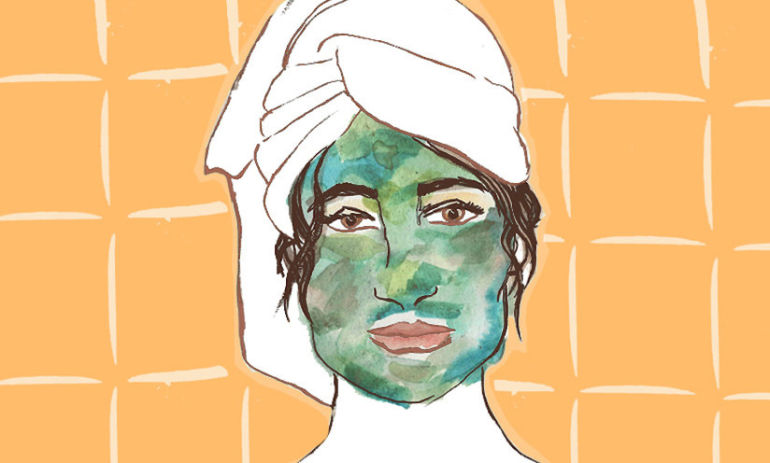
Let’s delve deeper and figure out what clay your skin will love, and what you should stay away from.
Kaolin Clay
The most versatile and widely used clay, Kaolin clay is found in soil that's developed from the weathering of rocks in hot, moist climates (think rain forests). It has a soft, fluffy appearance that blends particularly well with water. It adds a nice slip to products, which may explain why it pops up in everything from masks to cleansers. It also gently exfoliates, cleanses, and stimulates the skin but isn't particularly effective at drawing oil from pores.
Who should use it: Kaolin clay is wonderful for dry, sensitive, aging skin that doesn't need any help with excess oil.
Who should avoid it: Kaolin clay isn't so helpful for those seeking to eliminate oil or combat blemishes.
French Pink Clay
This gorgeous, rosy clay is a combination of red and white clays, and is considered the mildest of all clays. It gently but effectively purifies even the most sensitive skin. It successfully draws surface toxins from the skin, without overdrying it. Additionally, it softens, plumps, and refreshes the skin, and with consistent use, helps minimize pores.
Who should use it: It's ideal for skin that's easily irritated or prone to redness.
Who should avoid it: No one, really. It's gentle enough that it works for almost all skin type.
Moroccan Rhassoul Clay
This mineral-rich, versatile clay is mined deep beneath the Atlas Mountains in Eastern Morocco. It contains a high percentage of silica, magnesium, potassium, and calcium, which all help to nourish and heal the skin. Additionally, Rhassoul clay is known to reduce dryness and flakiness by regulating skin’s natural oil balance while improving skin’s elasticity, firmness, and texture.
Who should use it: It's perfect for almost all skin types, but especially those with dry skin.
Who should avoid it: No one, really.
Fuller’s Earth
This fascinating clay (sometimes known as a powder) has intense drawing properties, which may explain why it's found its way into a number of industrial settings. Containing various minerals, including magnesium, quartz, silica, iron, calcium, calcite, and dolomite, Fuller's earth is a natural by-product of volcanic glass transforming into solids.
Originally used by textile workers, or “Fullers,” to remove oil from sheep’s wool, when used in skin care, this clay is the perfect foil for oily skin and scars, or other skin discoloration.
Who should use it: Its drawing capabilities make Fuller's earth clay particularly beneficial for oily and acne-prone skin.
Who should avoid it: Anyone with dry and/or sensitive skin may find it a bit too stimulating.
French Green Clay
Like Fuller’s earth, French green clay has tremendous absorbing powers. It easily and effectively draws oils, toxins, and impurities from deep within pores. You may actually feel a slight tingling sensation when using this clay. This stimulating action brings blood to the face, resulting in a more refreshed, revitalized, toned appearance.
It's also incredibly nourishing for your skin since it contains actual decomposed plant material, meaning it's very nutritious.
Who should use it: French green clay is perfect for troubled skin types in need of deep detoxification.
Who should avoid it: It may be a little too active for skin that's fairly normal.
This post was adapted from the author's site, seedtoserum.com.
Illustration by Chloé Bulpin for mbg

No comments:
Post a Comment